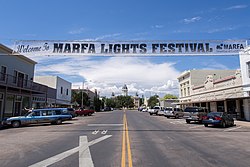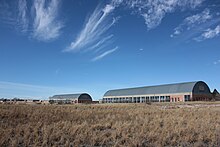
Presidio County is a county located in the U.S. state of Texas. As of the 2020 census, its population was 6,131. Its county seat is Marfa. The county was created in 1850 and later organized in 1875. Presidio County is in the Trans-Pecos region of West Texas and is named for the border settlement of Presidio del Norte. It is on the Rio Grande, which forms the Mexican border.

Alpine is a city in and the county seat of Brewster County, Texas, United States. The population was 5,905 at the 2010 census. The town has an elevation of 4,462 feet (1,360 m), and the surrounding mountain peaks are over 1 mile (1.6 km) above sea level. A university, hospital, library, and retail make Alpine the center of the sprawling 12,000 square miles (3,108,000 ha) but wide open Big Bend area including Brewster, Presidio, and Jeff Davis counties.
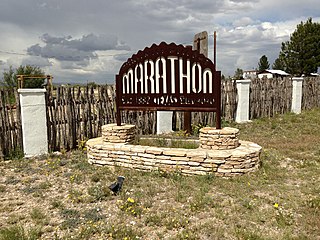
Marathon is a census-designated place (CDP) in Brewster County, Texas, United States. The population was 470 in 2007, after growing from 455 in 2000, but had decreased to 430 by 2010.
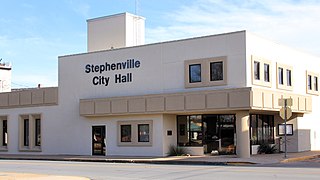
Stephenville is a city in, and the county seat of, Erath County, Texas, United States. It is on the North Bosque River, which forms nearby. Founded in 1854, it is home to Tarleton State University. As of the 2020 census, the city's population was 20,847, and it is the principal city in the Stephenville Micropolitan Statistical Area. Stephenville is among several communities that call themselves the "Cowboy Capital of the World".

Richmond is a suburb of Houston and the county seat of Fort Bend County, Texas, United States. The city is located within the Houston–The Woodlands–Sugar Land metropolitan area. As of the 2020 U.S. census, the city population was 11,627.

Goliad is a city and the county seat of Goliad County, Texas, United States. It is known for the 1836 Goliad massacre during the Texas Revolution. It had a population of 1,620 at the 2020 census. It is part of the Victoria, Texas, Metropolitan Statistical Area.
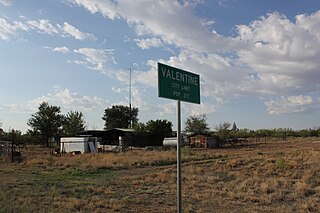
Valentine is a town in Jeff Davis County, Texas, United States. Its population was 134 at the 2010 census, down from 187 at the 2000 census.

Presidio is a city in Presidio County, Texas, United States. It is situated on the Rio Grande River, on the opposite side of the U.S.–Mexico border from Ojinaga, Chihuahua. The name originates from Spanish and means "fortress". The population was 4,169 at the 2000 census, and had increased to 4,426 as of the 2010 US census.
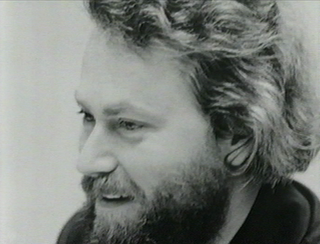
Donald Clarence Judd was an American artist associated with minimalism. In his work, Judd sought autonomy and clarity for the constructed object and the space created by it, ultimately achieving a rigorously democratic presentation without compositional hierarchy. He is generally considered the leading international exponent of "minimalism", and its most important theoretician through such writings as "Specific Objects" (1964). Judd voiced his unorthodox perception of minimalism in Arts Yearbook 8, where he says, "The new three dimensional work doesn't constitute a movement, school, or style. The common aspects are too general and too little common to define a movement. The differences are greater than the similarities."

The Big Bend is part of the Trans-Pecos region in southwestern Texas, United States along the border with Mexico, north of the prominent bend in the Rio Grande for which the region is named. Here the Rio Grande passes between the Chisos Mountains in Texas and the Sierra Madre Oriental in Mexico as it changes from running east-southeast to north-northeast. The region covers three counties: Presidio County to the west, Brewster County to the east, and Jeff Davis County to the north.

Dia Art Foundation is a nonprofit organization that initiates, supports, presents, and preserves art projects. It was established in 1974 by Philippa de Menil, the daughter of Houston arts patron Dominique de Menil and an heiress to the Schlumberger oil exploration fortune; art dealer Heiner Friedrich, Philippa's husband; and Helen Winkler, a Houston art historian. Dia provides support to projects "whose nature or scale would preclude other funding sources."

The Marfa lights, also known as the Marfa ghost lights, have been observed near U.S. Route 67 on Mitchell Flat east of Marfa, Texas, in the United States. They have gained some fame as onlookers have attributed them to paranormal phenomena such as ghosts, UFOs, or will-o'-the-wisp. Scientific research suggests that most, if not all, are atmospheric reflections, automobile headlights or campfires.

Fort D. A. Russell is the name of an American military installation near Marfa, Texas, that was active from 1911 to 1946. It is named for David Allen Russell, a Civil War general killed at the Battle of Opequon, September 19, 1864.

The Chinati Foundation/La Fundación Chinati is a contemporary art museum located in Marfa, Texas, and based upon the ideas of its founder, artist Donald Judd.

Shafter is a ghost town in Presidio County, Texas, United States. The Texas Attorney General's Office listed a population of 11 as of the 2000 Census. It was named in honor of General William R. Shafter, who at one point commanded the nearby Fort Davis. As of 2012, at least one silver mine, La Mina Grande, had been reopened by Aurcana Corporation.

The Chinati Mountains of Texas are a small range in the high desert of far West Texas near the city of Presidio. There is a pass through the mountains on Ranch to Market Road 2810, also known as Pinto Canyon Road, which connects to Farm to Market Road 170 at Ruidosa, Texas. Some believe the range derives its name from the Apache word ch'íná'itíh, which means gate or mountain pass.
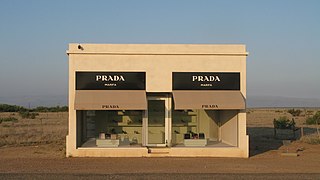
Prada Marfa is a permanent sculptural art installation by artists Elmgreen & Dragset, located along U.S. Route 90 in Jeff Davis County, Texas, United States, 1.4 miles (2.3 km) northwest of Valentine, and about 26 miles (42 km) northwest of Marfa. The installation, in the form of a freestanding building—specifically a Prada storefront—was inaugurated on October 1, 2005. The artists described the work as a "pop architectural land art project."

The Presidio County Courthouse is located in Marfa, Presidio County in the U.S. state of Texas. It was added to the National Register of Historic Places in 1977. It was designated a Recorded Texas Historic Landmark in 1964.

Building 98 at Fort D. A. Russell is the historic US army base bachelor officer quarters, officers club, and grand ballroom near Marfa, Texas; it was active from 1911 to 1946. Building 98 is Located at Fort David A. Russell's central fort complex. It is a project of the International Woman's Foundation and it is the home of the World War II German prisoners of war POW murals.

Chinati Hot Springs, also known as Ruidosa Hot Springs and Kingston Hot Springs, are volcanic thermal springs and historical oasis located north of Ruidosa, Texas in the Big Bend region of the Chihuahuan Desert, near the town of Presidio.
